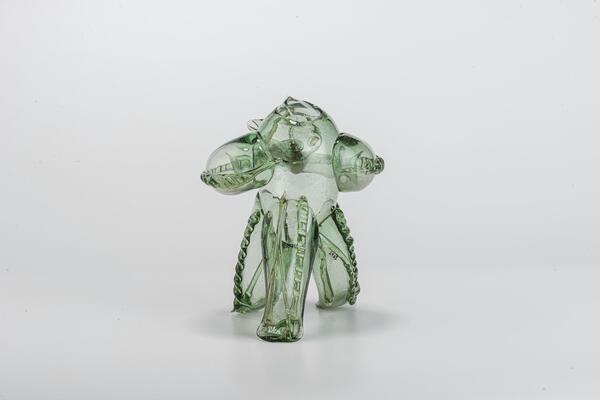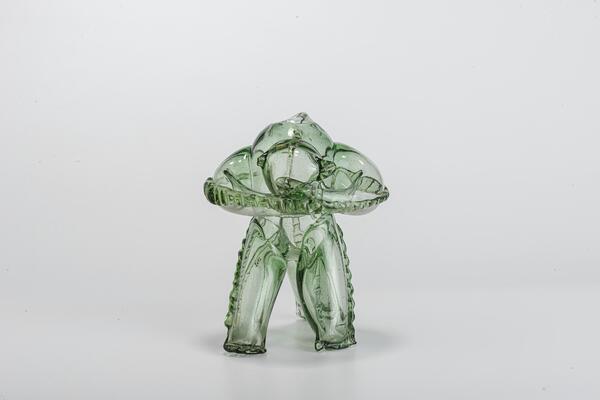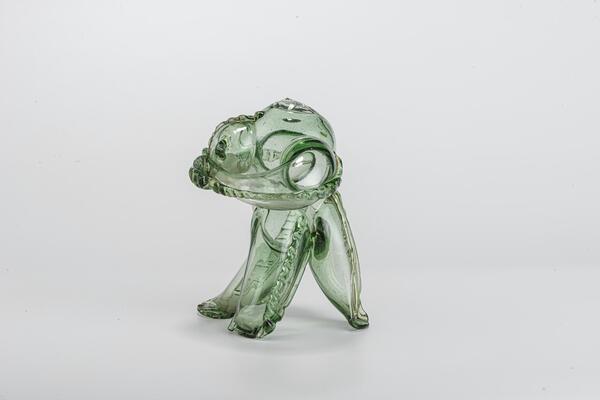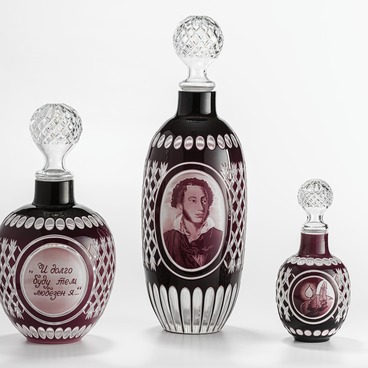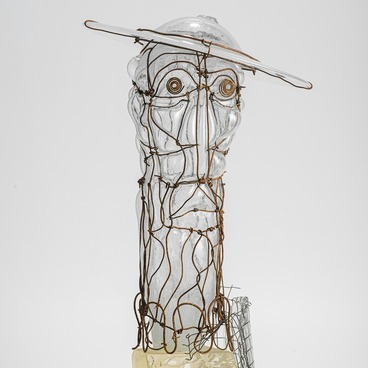Glass is one of the most ancient and common materials used by people. It differs from many other materials by the invariability of its manufacturing technology: apart from some specific types, modern glass does not fundamentally differ from its earlier versions. First of all, this statement is true for the bottle glass. It belongs to the cheaper and less pure varieties due to the content of iron silicates (they give a greenish color) and aluminum. A craftsman used green bottled bubble glass with unboiled inclusions to create this vessel.
The exhibit is an example of a free-blown product: it is made using the free-blowing technique, without any mold. Free-blown vessels in the form of animals and birds are characterized by the special vividness of the images. Each item clearly conveys its character, without losing the utilitarian purpose.
Animal items constitute a special section in the Russian art glass of the 18th century, a kind of “glass folklore”. They were not only practical and highly valued as banquet decorations, but also carried a meaning. The image of various animals referred to the pagan beliefs of the ancient Slavic farmers.
Vessels in the form of bears (vedmiks) were common in the south of Russia. In the Ukrainian (“Cherkasy”) regions, this animal was considered a symbol of fertility, it was revered as the one bringing happiness. The image of a bear necessarily appeared in wedding ceremonies and was associated with songs, dances, and partying. A humorous folk saying “to overcome the bear” meant “to drink from a flask until it is empty.”
Bear-shaped vessels (vedmiks) could be used not only for drinks and as holiday decorations, but also as lamp burners. In the old days, such lamps performed ritual functions.
In the 18th century, the Nikolsko-Bakhmetevsky factory catered to the tastes of noble customers. This concerned not only the high quality of products, but also their style, so folk motifs were not popular among the craftsmen.
It was only in Soviet times that the Red Giant factory administration decided to occupy the appropriate niche.
The exhibit is an example of a free-blown product: it is made using the free-blowing technique, without any mold. Free-blown vessels in the form of animals and birds are characterized by the special vividness of the images. Each item clearly conveys its character, without losing the utilitarian purpose.
Animal items constitute a special section in the Russian art glass of the 18th century, a kind of “glass folklore”. They were not only practical and highly valued as banquet decorations, but also carried a meaning. The image of various animals referred to the pagan beliefs of the ancient Slavic farmers.
Vessels in the form of bears (vedmiks) were common in the south of Russia. In the Ukrainian (“Cherkasy”) regions, this animal was considered a symbol of fertility, it was revered as the one bringing happiness. The image of a bear necessarily appeared in wedding ceremonies and was associated with songs, dances, and partying. A humorous folk saying “to overcome the bear” meant “to drink from a flask until it is empty.”
Bear-shaped vessels (vedmiks) could be used not only for drinks and as holiday decorations, but also as lamp burners. In the old days, such lamps performed ritual functions.
In the 18th century, the Nikolsko-Bakhmetevsky factory catered to the tastes of noble customers. This concerned not only the high quality of products, but also their style, so folk motifs were not popular among the craftsmen.
It was only in Soviet times that the Red Giant factory administration decided to occupy the appropriate niche.

